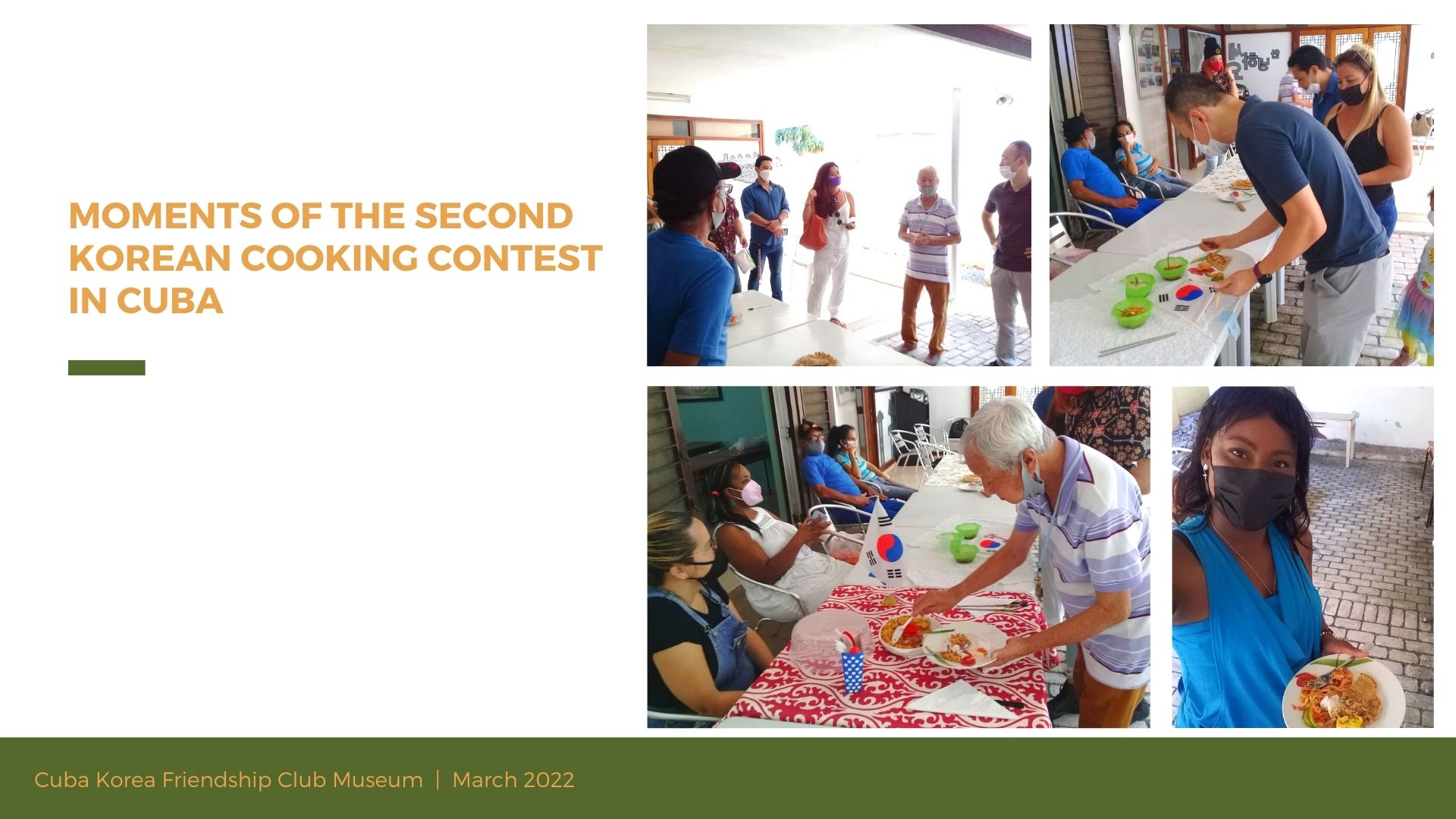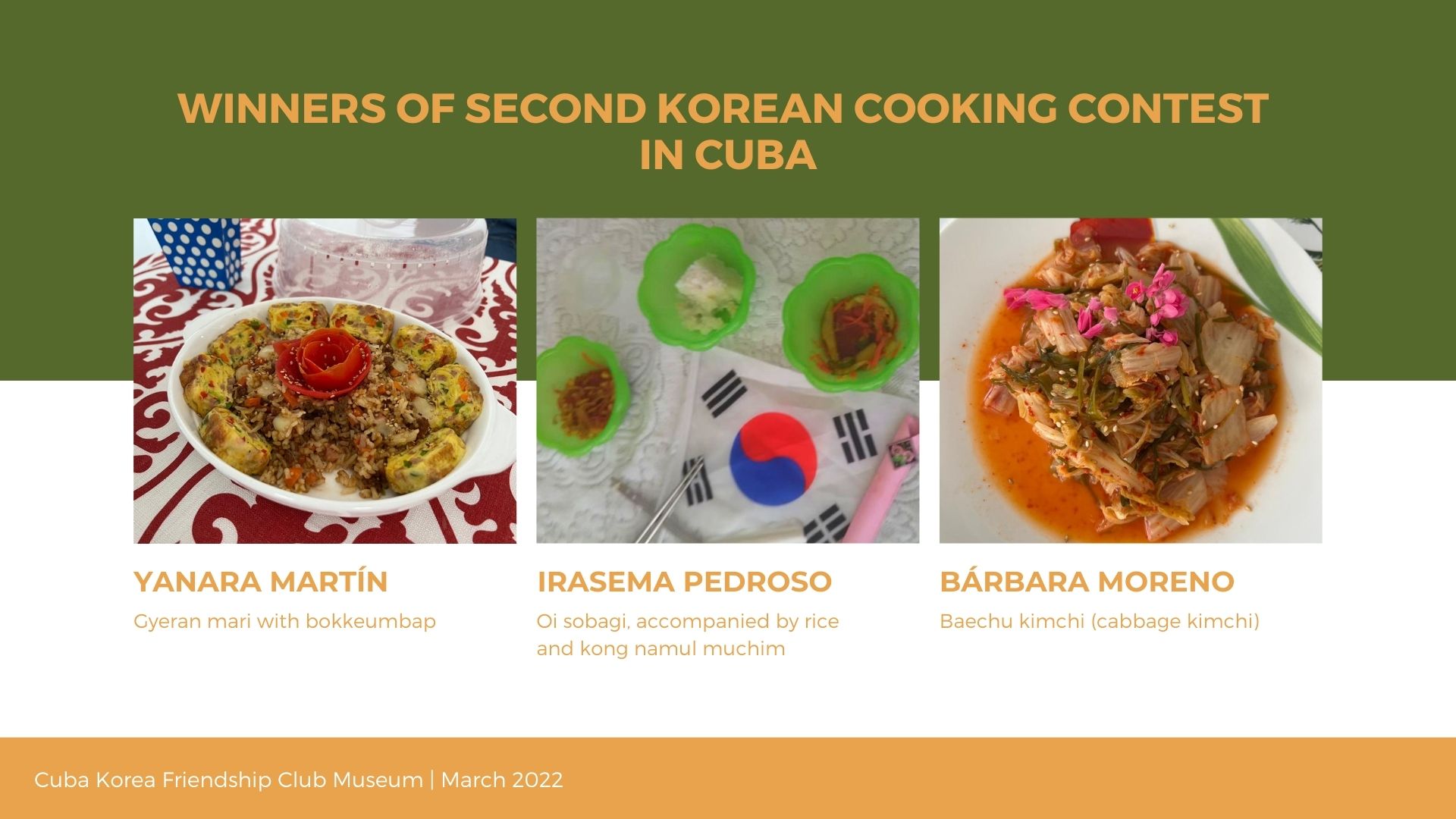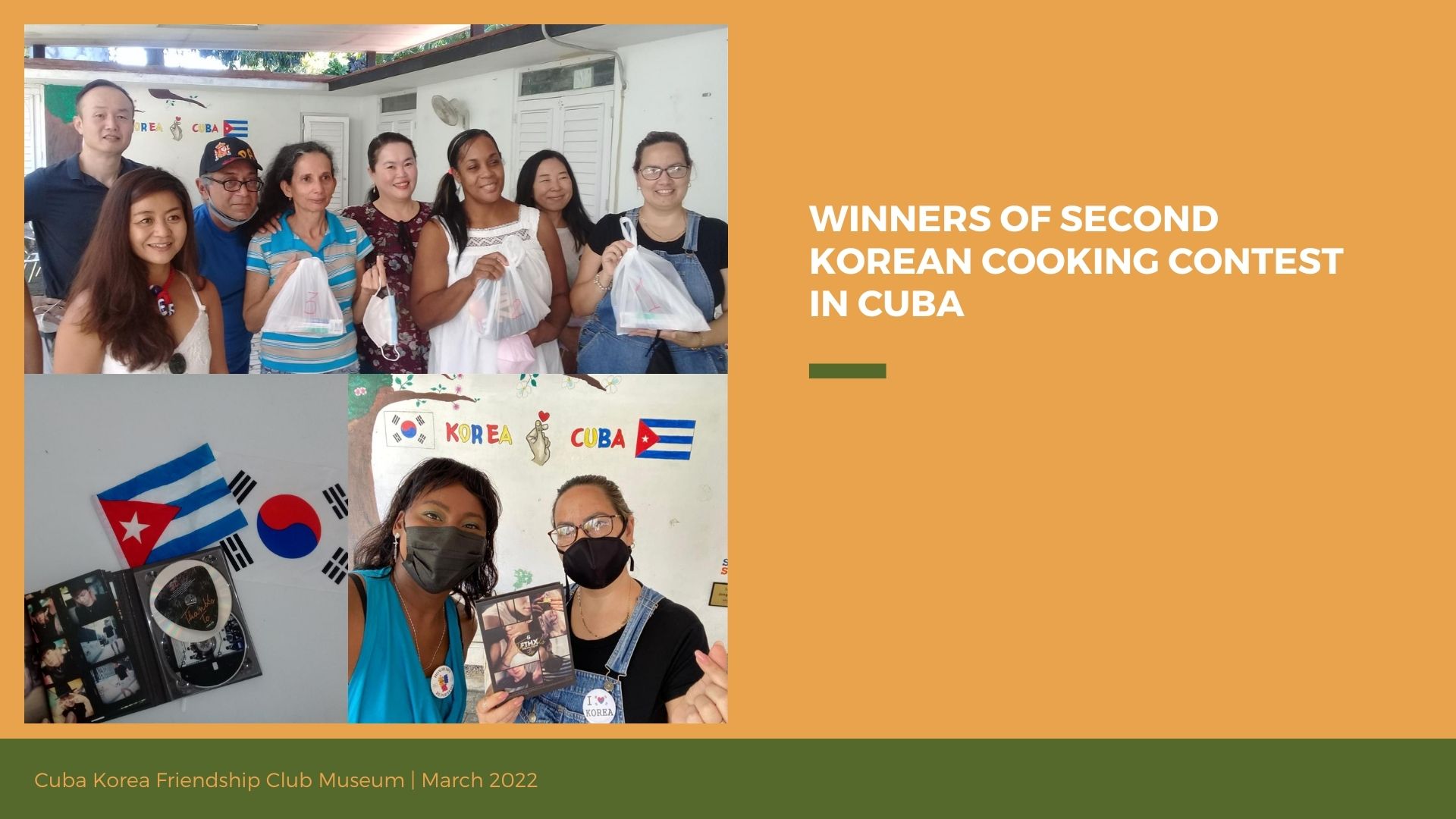- 한국어
- English
- 日本語
- 中文
- العربية
- Español
- Français
- Deutsch
- Pусский
- Tiếng Việt
- Indonesian
By Honorary Reporter Dayviana Diaz from Cuba
Photos = Dayviana Diaz
The Cuba Korea Friendship Club on March 19 held its second Hansik contest at the club's museum as part of efforts by ethnic Koreans to revive cultural activities in Havana, with the most difficult months of the pandemic seemingly over.
Four students of the club museum's cooking class and participants in cultural projects involving Korea attended the competition. The jury was comprised of Antonio Kim, the museum's director and president of the Korean Association in Cuba; Julie Mon, instructor of the cooking class; Martha Lim, a noted leader among the second generation of Korean descendants; and members of the ethnic Korean community in Cuba. The contest had three winners and one honorable mention.

Jury members taste the dishes presented at the Cuba Korea Friendship Club's second Korean cooking contest in Havana.
This was my first time at such an event and I got to taste the dishes of each contestant and see their preparations. Before, my only contact with Korean cuisine had been with kimchi, gimbap (seaweed rolls) and japchae (glass noodles with meat and vegetables).
I learned about the event from my friend Yanara Martin Piloto, who competed in this year's contest.
The dishes presented comprised leading representations of Korean cuisine ranging from kimchi to Korean-style fried rice. Obtaining each ingredient to get as close to the original as possible is difficult nowadays, thus each contestant's effort was lauded.

The winners of the second Korean cooking contest hosted by the Cuba Korea Friendship Club
First, Barbara Moreno presented baechu (kimchi cabbage) kimchi, an essential dish in Korean cuisine and one of my favorites. Second, Samuel E. Gomez presented buchimgae, a flat and thin pancake-shaped fritter that I tried for the first time, accompanied by soy sauce, vinegar and sesame seeds to give it a distinctive and delicious touch.
Third, Irasema Pedroso presented oi sobagi (cucumber kimchi) accompanied by rice and kongnamul muchim (spicy bean sprouts), a refreshing combination that I also tried for the first time. And the fourth contestant, my friend Martin, presented gyeranmari (egg roll) with fried rice that delighted everyone.
After the event, Martin, who spent nearly five months exploring Korean cuisine, told me, "Participating in the Korean food contest for the second time was a nice experience, though it was still a personal challenge. This time I was less nervous but the pressure was the same since the jury has extensive culinary knowledge as they were Korean or descendants experienced in Hansik who know the original flavor of each dish well."
"We in Cuba don't have many of the ingredients my dish needs within reach, but it wasn't impossible to use adaptation with the ingredients. In the case of gyeranmari with fried rice, this is an easy recipe that can be enjoyed hot or cold. Children love this, and so it's ideal for the whole family."

The winners of the competition pose with their prizes provided through collaboration with the Korean Embassy in Mexico.
The first contest was held at the end of last year to mark the centennial anniversary of Korean immigration to Cuba. Martin only got an honorable mention in that event but won the top prize in her second attempt.
"This recognition motivates me to continue learning about Korean cuisine and shows me that my passion for Korean food is driving me to achieve better results in my dishes," she added.
kalhong617@korea.kr
*This article is written by a Korea.net Honorary Reporter. Our group of Honorary Reporters are from all around the world, and they share with Korea.net their love and passion for all things Korean.